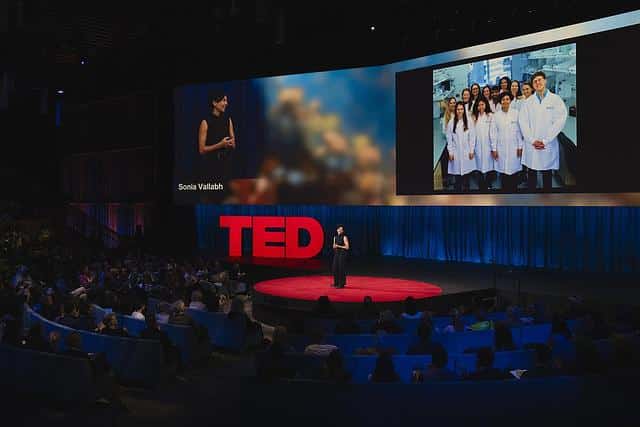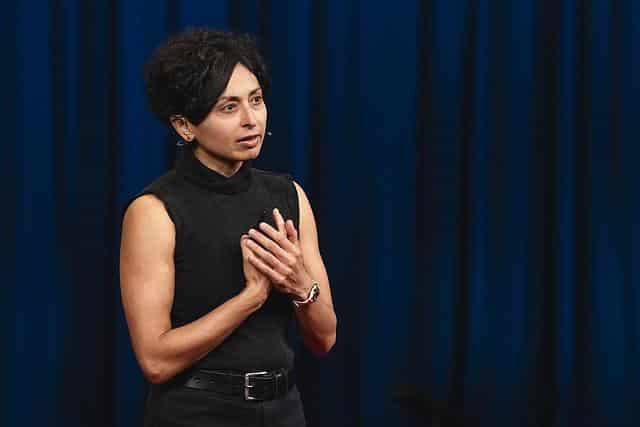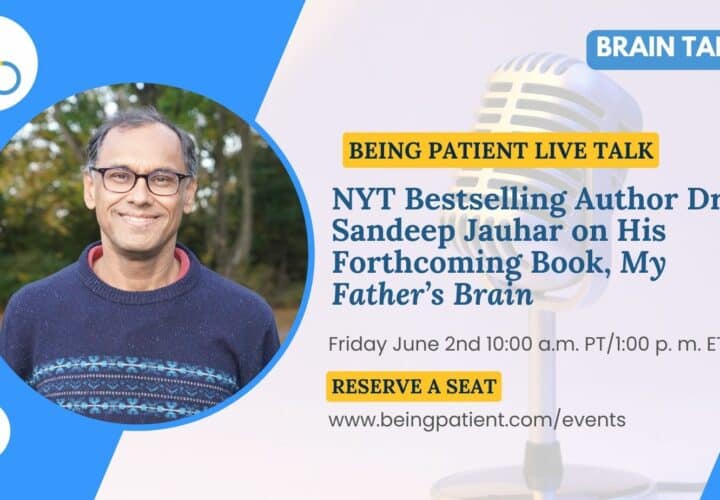Fourteen years ago, lawyer Sonia Vallabh took a genetic test that showed she would one day contract a fatal disease that ends in a rapid onset dementia. She and her husband quit their jobs and went back to school for biomedicine. Now, they run a research lab at MIT and Harvard.
In 2011, a lawyer named Sonia Vallabh took a predictive genetic test. The results sent her life in a wild new direction. But the story starts even earlier than that, with Vallabh’s mother. Six months after Vallabh’s wedding to her husband Eric Minikel, Vallabh’s mom, who was 52 at the time, fell very, very ill, and no one knew why.
“Suddenly there’s this tear in the universe and my mom is being sucked through it,” Vallabh recalled from the stage at the 2024 TED Conference. “No one can tell us what’s wrong, but something is really, really wrong, and it is snowballing, and it is everything: She’s confused about who she is, where she is, she’s scared, she’s hallucinating. She is too weak to walk. This is happening on a time scale of weeks. I’m looking into her eyes, and they are these black holes, and I am begging her to come back, but it’s like, I’m shouting into the void.”
That summer, Vallabh’s mother went into the hospital and never came back out. “By the time she dies, it has been months since she was really there,” she says. “We don’t get a present-tense goodbye — dementia has robbed us of that — and we still have no idea what happened.”
In Alzheimer’s, Hallucinations Signal Faster Cognitive Decline
A few months later, she and Minikel, a transportation engineer, receive the results from her mother’s autopsy.
The report told them that her mom died of a genetic prion disease — a group of rare, untreatable, and fatal neurodegenerative disorders — and that Vallabh was at a 50/50 risk of having inherited it herself.
Prion diseases — which include diseases like Creutzfeldt-Jakob, bovine spongiform encephalopathy (mad cow disease), and kuru — kill about 300 people in the U.S. each year, often within a year of the onset of symptoms. But these diseases aren’t often genetic. Most cases are, as Vallabh puts it, random.
Here, however, proteins in Vallabh’s mother’s brain misfolded and led to her death because of a “single-letter typo,” as Vallabh put it, in her DNA. Did Vallabh have this DNA typo, too? The couple agreed that they couldn’t live in a state of wondering. They wanted to see into the future.
Vallabh took her own genetic test and learned that yes, she did carry the genetic mutation for prion. There was no cure. There would be no way to stop it. It could arrive at any point.
But she and Minikel didn’t sit back and accept the news. “We knew that for us, this limbo isn’t life,” she said. “I couldn’t control what happens next, but I could control whether something happens next.”
The couple dove in. They found they were obsessed with learning about prion disease. Google and Wikipedia searches turned into them leaving their jobs and taking entry-level positions in science. Before long, Vallabh and Minikel left their respective careers in law and transportation engineering and pursue biomedical research. Together, the couple earned doctoral degrees in biological and biomedical sciences from Harvard. Today, they run a prion research laboratory, Prions@Broad, at the Broad Institute of MIT and Harvard. The mission: to develop a therapy for prion disease within their lifetimes.
A protein called PrP goes rogue in the body. It changes shape, grabs other copies of PrP and corrupts them, and eventually, it spreads through the brain and kills off neurons.

Vallabh and Minikel’s lab team is focused on understanding the mechanisms of prion disease and developing potential treatments.
“What if we can do the most good not by going after the big scary pathogens, but instead by doing something much more understated and subtle, and less sexy, and less conventional: Long before disease begins, we use a drug to ask this not-yet-pathogenic protein to please go away,” she explained.
Her team scoured the globe for tools to dial PrP down in the body among this 1 in 50,000 people who carry prion’s genetic precursor.
They found one promising option through colleagues at a neighboring biomedical research lab, the Whitehead Institute, where they collaborated on a gene-editing technique called CHARM (Coupled Histone tail Autoinhibition Release of Methyltransferase).
CRISPR is similar idea, but while CRISPR is more like gene editing scissors that cut out unwanted genes, CHARM allows scientists to turn a gene up or down.
A similar approach could apply for diseases like Alzheimer’s, Huntington’s, Parkinson’s and Lou Gehrig’s disease, all of which also come about when problematic proteins build up in the brain.
Meanwhile, Vallabh and Minikel had a family: two children, with IVF through pre-implantation genetic testing, to avoid passing on the mutation.
“On the one hand, I got dealt a bad card. And don’t get me wrong, I really don’t want to die young,” she said. “At the same time, this bad card has launched me on a quest with a team, and the wonder of this exact life is that I am constantly getting to meet people’s best selves, including versions of Eric and me that I wouldn’t have encountered any other way.”
Of course, they’re learning, to meaningfully identify and then test a medicine for a rare disease, there’s a lot more you have to do than just uncover the molecule that could quiet PrP. And at the pace they’re trying to move, they need to do a lot at once.
With “Genetic Scissors” Scientists Edit Alzheimer’s Prevention Into Brain Cells
What’s next for Prions@Broad?
This January, researchers from the Prions@Broad team published research in Nature about a promising approach for treating prions. Results rarely translate from mouse to human studies, but the team is full of hope.
And in December, Vallabh’s lab completed enrollment for early clinical trial to test one lead: neural antisense oligonucleotides (ASOs) — synthetic compounds designed to bind to PrP RNA to lower the expression of PrP in the brain — as a prion disease therapy.
What’s she hoping for? “Any sort of elongation of life could be a truly amazing thing to see,” she told Being Patient. “It’s a Phase 1/2, so it’s not really powered to see that, but anecdotes will loom large.”
The trial is small — 54 participants across 10 trial sites — and in this early stage of clinical testing, it’s just the beginning. But: “It’s getting people diagnosed. It’s bringing prion disease awareness up. And it’s showing us that we can enroll in clinical trials super fast,” she said.
As she said on the TED stage: “There will be the race to the first drug and the race to the best drug. We’re we’re far from the end of this quest, but we’re far from the beginning.”




